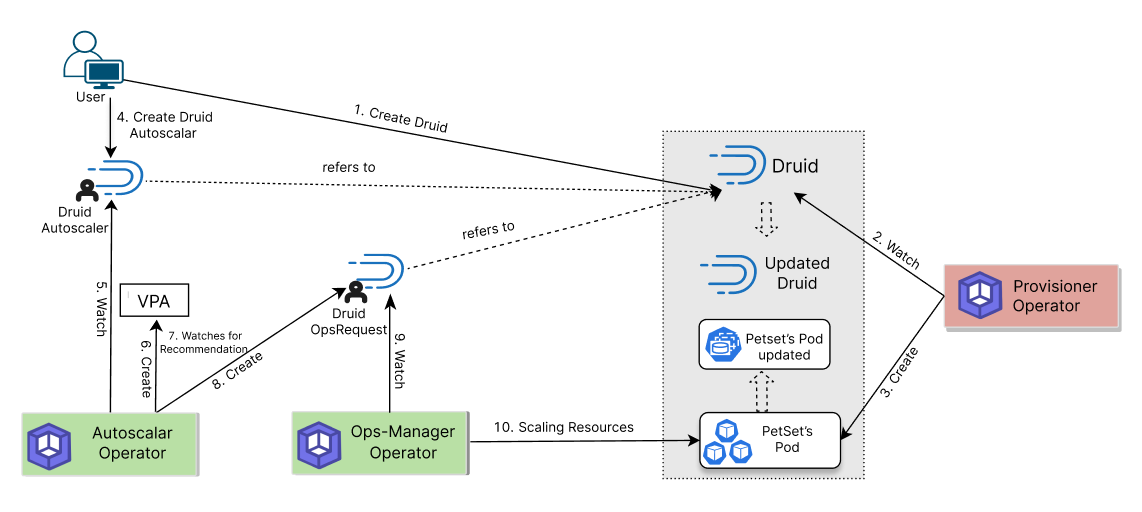You are looking at the documentation of a prior release. To read the documentation of the latest release, please
visit here.
New to KubeDB? Please start here.
Druid Compute Resource Autoscaling
This guide will give an overview on how KubeDB Autoscaler operator autoscales the database compute resources i.e. cpu and memory using druidautoscaler crd.
Before You Begin
- You should be familiar with the following
KubeDBconcepts:
How Compute Autoscaling Works
The following diagram shows how KubeDB Autoscaler operator autoscales the resources of Druid database components. Open the image in a new tab to see the enlarged version.

The Auto Scaling process consists of the following steps:
At first, a user creates a
DruidCustom Resource Object (CRO).KubeDBProvisioner operator watches theDruidCRO.When the operator finds a
DruidCRO, it creates required number ofPetSetsand related necessary stuff like secrets, services, etc.Then, in order to set up autoscaling of the various components (ie. Coordinators, Overlords, Historicals, MiddleManagers, Brokers, Routers) of the
Druidcluster the user creates aDruidAutoscalerCRO with desired configuration.KubeDBAutoscaler operator watches theDruidAutoscalerCRO.KubeDBAutoscaler operator generates recommendation using the modified version of kubernetes official recommender for different components of the database, as specified in theDruidAutoscalerCRO.If the generated recommendation doesn’t match the current resources of the database, then
KubeDBAutoscaler operator creates aDruidOpsRequestCRO to scale the database to match the recommendation generated.KubeDBOps-manager operator watches theDruidOpsRequestCRO.Then the
KubeDBOps-manager operator will scale the database component vertically as specified on theDruidOpsRequestCRO.
In the next docs, we are going to show a step-by-step guide on Autoscaling of various Druid database components using DruidAutoscaler CRD.



































